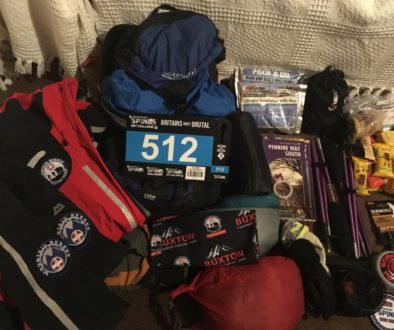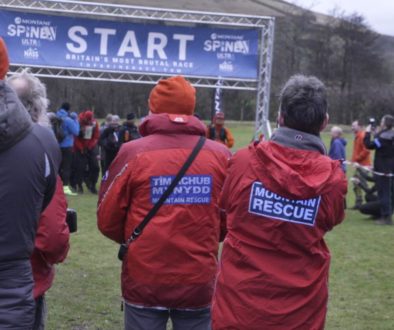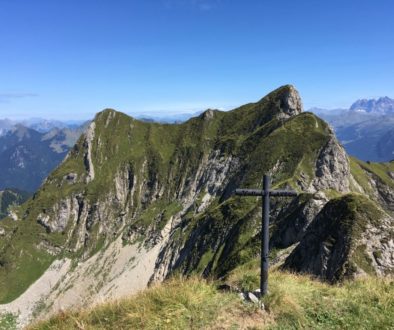Thoughts on my pre-race gear preparation and kit used…..what worked and what didn’t…
There’s the well known adage used by the military referred to as the 7Ps which stands for Proper Planning and Preparation Prevents P**s Poor Performance.The planning for this race was like a military operation with the testing and organisation of kit, food, maps and recceing of the route.

Organising my gear
My drop-bag
I gathered all my gear in a heap on the bedroom floor before organising it into associated piles.
I carried a spare sleeping bag in my drop bag so that I didn’t have to unpack and repack the one in my rucksack at CP1.
I used the little drawstring bags that you collect from races to organise my drop bag so there was less faffing at CP1. This made everything easy to locate and nothing was forgotten. Each bag was labelled with their content:
Clothes for travelling home.
Wash kit & towel
Spare food
Complete change of clothes plus batteries and handwarmers for changing over at CP1.
Spare clothes (including my old pair of waterproof overtrousers just in case I damaged mine and OMM Kamleika Smock)
Flip flops (for wearing at CP1 and Hawes)
Spare trainers (just in case!)
Shoes for travelling home
I made myself a checklist of things to do at the CP1 as a reminder just in case I had brain fog!
Change into warm dry clothes
Take contact lens out
Eat evening meal
Change headtorch batteries
Check Garmin battery (change if required)
Restock food and water
Restock clothes to be carried (if required)
Get rucksack ready to go
Set alarm
Sleep
Eat
Wash
Go

All organised and ready to go
My rucksack
I carried the OMM Adventure light 20 litre rucksack with the OMM chest pouch.
Gear carried in my rucksack at the start:
Alpkit titanium mug
The fork end of a spork (well it got snapped but then was a perfect size to fit inside the mug!)
Waterproof matches
Coleman lightweight stove (spork, matches & stove were all packed inside the mug which also doubled up as the pan for the stove)
Coleman gas
Vango Venom 300 down sleeping bag, 828g (pre-packed inside bivi bag as this saves faffing and keeps the sleeping bag clean and dry if you need to get it out in an emergency)
Mountain Equipment Ion bivi bag
Adidas running tights
Helly Hanson Lifa base layer (worn from Horton)
Spare Running Bear socks (used from Malham)
North Face lightweight Fleece pullover (worn from M62)
Saloman Bonatti waterproof overtrousers (worn from M62)
Rab Generator Primaloft Jacket (worn but I can’t remember when I put it on!)
Kahtoola micro spikes
Quechua water bladder (With berry flavour High Five tabs as I don’t find water refreshing)
Trekmates dried pasta meal
Variety of gluten free bars (trek bars, 9bars, Eat natural bars)
Trail mix
Baby bel cheeses
Gluten free blueberry and chocolate brownie (my special treat and yes, it was delicious!)
Plastic bottle (concertina-ed variety, empty, lightweight and carried in mesh side pocket for quick access in case bladder burst or I had difficulties re-filling)
Mountain King Trail Blaze trekking poles (tucked in the mesh pocket on the side of my rucksack and secured at the top with prusik cord).
Top pocket:
Sunglasses
First aid kit (easily accessible in emergencies)
See below for Chest Pouch contents
I weighed my fully packed rucksack including water before the start and it weighed 6.5kg. It obviously got lighter during the race as I wore extra layers and consumed my food/water.
Gear worn
Feet:
Running Bear woollen socks
Inov8 debris gaitor
Inov8 Roclite boots
Clothes worn from Edale to Hebden Bridge:
Ron Hill thermal tights
More Mile Vancouver plus thermal base layer
Rab Sawtooth softshell jacket
Mountain Equipement goretex pro jacket (put on about a minute before the start!
Saloman waterproof overtrousers (put on at M62
Inov8 neck gaitor
Lowe Alpine powerstretch hat
Wickable underwear
North Face lightweight fleece pullover (put on at M62)
Outdoor Designs Powerstretch gloves (got wet and changed to Sealskinz early on
Sealskinz waterproof gloves (handwarmers added at M62).
Clothes worn from Hebden Bridge to Hawes:
Skins A200 thermal tights
Ron Hill thermal base layer
North Face lightweight fleece pullover
Helly Hanson Lifa base layer (added underneath my other base layer at Horton)
Saloman Bonatti waterproof overtrouser
Rab Generator primaloft jacket (can’t remember where I put it on!)
Buff thermal fleecy buff
Lowe Alpine powerstretch hat
Wickable underwear
Sealskinz gloves
Extremities primaloft mittens
Rab Sawtooth Softshell jacket
Mountain Equipment goretex pro jacket
So…what worked…..?
OMM Trio Map pouch
This takes a bit of getting used to when you first use it to ensure the tension is right otherwise it bounces around and hits you in the belly. The clips are not great to undo particularly if you have cold hands but other than that this is a really useful item of kit where you can store everything you need close to hand. I kept my phone (a cheap Nokia one that keeps it’s charge for a week!), GPS (I used Garmin Etrex 20) a stash of food (mini gluten free sandwiches filled with hummus and a couple of bars), two energy gels, spare gloves, a tiny Swiss Army knife and money/credit card in here. My compass (Silva Expedition 4) was kept separately in my waist belt pocket as it shouldn’t be stored close to a mobile or GPS (or any other metallic object for that matter) as it can affect the polarity.
Inov8 Roclite 268 goretex boots
After some research, I opted for these running boots as I get cold feet when I am not travelling very fast and I found them to be great. The grip was good on the slabs and rock and although not as effective in the mud they were still ok. More importantly they did keep my feet warm, I wasn’t expecting them to keep my feet dry but on the whole they stopped the cold water from coming in from the shallow puddles. I did have to wade several rivers that went over my boots and I’d read that once the water gets into goretex shoes there is nowhere for it to escape. To be honest, I never felt I had a problem with this and my feet didn’t feel squelchy at all. My feet were in good condition when I finished with one tiny blister on my little toe and they weren’t wrinkly from constantly getting wet. I did have hotspots at CP1 where my little toes on both feet had rubbed against my next toe but the medics wrapped tape around them and I never felt any discomfort after this. Perhaps I should try injinji socks to keep my toes separate in future. My feet were slightly tender under my heels when I finished and maybe this was because the boots only have a 6mm drop. I’ve ran a number of other long races in Inov8 shoes, Trailroc and X-talons with the 6mm drop and not found this a problem but then again I was out significantly longer this time and it was over 30 miles further than I’d ever ran before!
Mountain Equipment Goretex jacket
I was all set to carry my OMM Kamleika jacket until the morning of the race when I checked the weather reports and decided to switch to my goretex jacket. I’m so glad I did! It is a more robust, thicker fabric albeit slightly heavier, although the pack size isn’t that much different but it has increased breathability and waterproofness so I found it suited me better in the inclement weather.
Mountain King Trail Blaze trekking poles
The first race I used my poles on was the CCC last year (read my earlier tongue-in-cheek article about pole etiquette). I would have been black and blue if I hadn’t used my poles on the Challenger as I’m sure I would have been blown over or slipped in the mud significantly more times as they saved me from hitting the deck on numerous occasions.
And….what could be improved…?
Head Torch
I had no problems with the torch per se, it was the strap that was an issue. I used a Led Lenser SE07R, which slipped down a few times, once rather annoyingly as we were descending from the summit of Fountains Fell in treacherous conditions. I’ll look at getting a new overhead strap as mine kept loosening itself.
I prefer to wear my headtorch underneath my hood so as to keep the battery warm but the brim of my hood kept slipping over it and obscuring the light so I wore it over my hood eventually.
I used the rechargeable battery pack to CP1 then changed to lithium batteries here even though the battery pack had not ran out as I didn’t want to change batteries partway through the night. The SEO7R is interchangeable between the rechargeable battery pack and standard batteries. I use lithium batteries rather than alkaline as they are lighter, last longer and still function in cold conditions.
I used my torch on the dim setting as I knew the battery life lasts all night on this setting and still provides perfectly adequate light for running. I tend to switch it to bright if I’m looking for a particular feature in the dark.
I carried a Petzl tikka headtorch as a backup in case my batteries ran out because changing them over in the pitch black is a nightmare!
Maps
I used the Harvey’s waterproof maps, which I found to be perfectly adequate for navigating and compact enough so as not to be obtrusive. I carried it in my hand when recceing, however, I didn’t bank on the extreme weather conditions. I was afraid that my map would have got blown out of my hand by the wind or disintegrated in the rain (I haven’t put the maps to the test on how long they would last being battered by heavy rain and gales over a long duration). However, my running buddy Sarah seemed to have an effective solution. She cut the Harvey’s map down into the independent sections and laminated these. They were then small enough to fit into the map pocket on the OMM front pouch.
Gloves
I suffer from Raynard’s so keeping my hands warm can be a problem. I didn’t quite get it right with my gloves and did get cold hands on several occasions. I initially wore powerstretch gloves to begin with which kept my hands warm but then they got saturated from the rain. I swapped to my Sealskinz waterproof gloves, with the cuffs tucked tightly under my jacket and these kept my hands dry but on occasions my fingers still got cold so I tucked a handwarmer into my gloves at the M62 to CP1 and then again at Malham Tarn to the finish. At Malham Tarn I put my primaloft mits over my Sealskinz and my hands were completely toasty after this but the bulk of the mittens made it difficult to grip my poles.
Sleeping mat.
My sleeping system was only designed for emergencies. I had no plans to bivi outside. However, I did end up camping at Malham Tarn and Sarah kindly let me share her tent. I used the foam padding from my rucksack to lie on and although this protected my core from the cold ground, my legs got cold as I had no insulation underneath.
Glasses
Rather than clear glasses or goggles, I took sun glasses and although I didn’t have any problems with the wind affecting my eyes, a lot of people did. One poor chap had to be pulled from the race by the medics because of an eye problem. So, I intend to purchase some clear wrap around glasses to protect my eyes in the future. I did carry spare contact lens in my first aid kit. After the impromptu stop-over at Malham Tarn I lost a lens so needed to replace one.
And finally, I got frost nip on my nose from the wind chill so….
I must remember to put Vaseline on my nose to act as a barrier from the cold weather in the future!!






